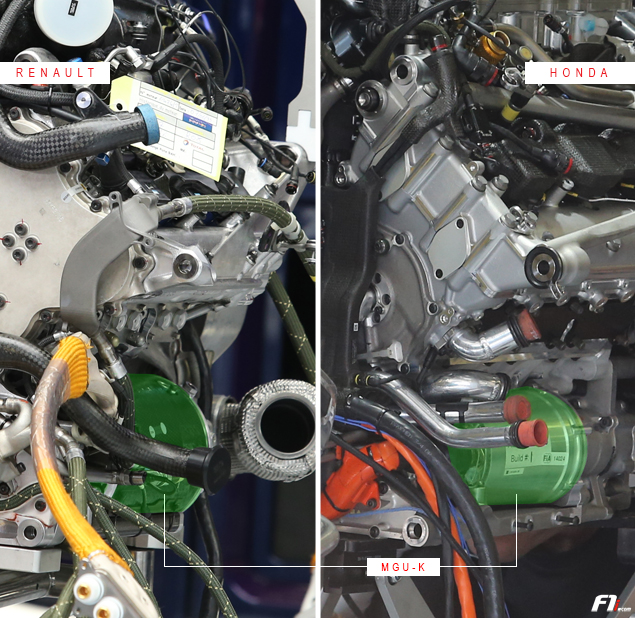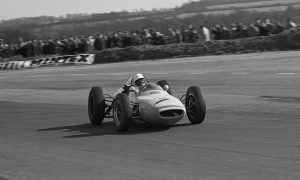RESTRICTIONS ON THE MGU-K
Looking at the diagram available in Appendix 3 of the technical regulations, the battery, also known as energy store (ES), can feed up to 4MJ/lap to the MGU-K, which then transfers a maximum power of 120kW (or 163bhp) to the engine (actually the drivetrain). If the settings have been adjusted to deliver the full 120kW, then the 4MJ are used up in 33.33 seconds.
It is worth recalling that these 4MJ could be deployed over a longer period of time, provided that the 120kW power be graduated, depending on how much pressure the driver applies on the throttle. It is actually impossible to know exactly for how long the energy can be dispensed, and F1 technical expert Matthew Somerfield has brilliantly explained why the 33.33s are a misnomer.
If you surmise that the battery of the all-conquering Mercedes power unit does send 4MJ to the MGU-K, the engine can then deliver an extra 163bhp horsepower for 33.33s on each lap. Now, if Honda’s energy store could, for one reason or another, only supply half of the maximum 4MJ last year, this means the Japanese power unit could only use the 163bhp for 16.66s (or 81.5bhp for 33.33s). Fernando and Jenson Button’s straight-line speed deficit was painfully obvious at power tracks like Spa-Francorchamps and Monza.








